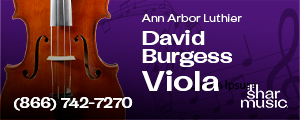Music as Teaching, Teaching as Music : World-renowned Virtuoso’s Master Class
Abstract:
Ray Chen’s preparation for his upcoming Curtis master class demonstrates how performance and pedagogy can merge into a single practice. His process highlights reflective practice, embodied aesthetics, and the role of cultural capital in music education. By openly acknowledging technical difficulty, verbalizing sensory impressions, and balancing spontaneity with structured guidance, Chen models a form of teaching that is both rigorous and imaginative. The session is expected to provide students not only with technical clarity but also with a deeper understanding of performance as cultural responsibility and artistic storytelling.

Ray Chen is celebrated worldwide for his virtuosity and charisma on stage. Yet his influence extends beyond performance into the realm of pedagogy. His preparation for the upcoming Curtis master class reveals a process that is not merely rehearsal but a living laboratory where artistry and education converge.

Improvisation and Structure in Tension
Chen’s practice sessions are playful and candid. He does not conceal mistakes, at times admitting, “This variation is the hardest I have ever played.” Such honesty dismantles the illusion of perfection and reframes learning as a process.
At the same time, Chen translates spontaneous remarks into structured teaching language, embodying Donald Schön’s concept of reflective practice. This duality offers students a model of adaptive learning that balances freedom with clarity.
Embodied Aesthetics and Instrument Adaptation
When Chen describes a brighter timbre on a modern violin, he demonstrates embodied aesthetics in action. The body and instrument negotiate, and he verbalizes that negotiation.
For students, this illustrates that adaptation is not only technical but also sensory and cognitive. His approach suggests that short adaptation routines—interval checks, scale recalibration, bow placement—should be institutionalized in pedagogy.
Honest Confession and Pedagogical Trust
Chen’s self-critique functions as a pedagogical tool. By exposing vulnerability, he builds trust and legitimizes student struggles. This dynamic resonates with Vygotsky’s zone of proximal development, where the teacher’s openness expands the learner’s psychological safety net and encourages risk-taking.
Storytelling and Multisensory Learning
Chen often describes timbre through imagery, such as “a sound like sunlight.”
These metaphors activate cross-modal learning, enabling students to internalize concepts through multiple senses. His classes thus move beyond technical drills into creative spaces where music is translated into language and imagination.
Responsibility and Cultural Capital
Chen’s remark that teaching at Curtis means guiding prodigies reflects an awareness of cultural capital. He positions himself not only as a transmitter of technique but also as a mediator of tradition. For students, this reframes music study as participation in a lineage and contribution to cultural heritage.
Education and Art in Fusion
The Curtis master class is not going to be a conventional lesson.
Chen prepares to give students more than technical advice: they are going to learn how to embody music physically, how to acknowledge difficulty without shame, and how to narrate art through metaphor.
His teaching is performance. His performance is teaching. The two collapse into one experience. Students are likely to leave with sharper technique and a deeper sense of artistic identity.
Ray Chen’s master class is not a classroom in the ordinary sense. It is a stage where practice itself becomes instruction and mistakes become material for growth. His approach blends pedagogy, performance studies, and psychology into a single practice.
Curtis is about to host more than a master class. It is about to host a celebration of music and education converging. At the center of that convergence stands Ray Chen, a musician who turns rehearsal into revelation.
References (Suggested)
• Schön, D. A. (1983). The Reflective Practitioner: How Professionals Think in Action. Basic Books.
• Vygotsky, L. S. (1978). Mind in Society: The Development of Higher Psychological Processes. Harvard University Press.
• Bourdieu, P. (1986). The Forms of Capital. In J. Richardson (Ed.), Handbook of Theory and Research for the Sociology of Education. Greenwood.
• Bowman, W. (2004). Cognition and the body: Perspectives from music education. Philosophy of Music Education Review, 12(1), 59–70.
Violinist.com is made possible by...
Dimitri Musafia, Master Maker of Violin and Viola Cases
International Violin Competition of Indianapolis
Violinist.com Holiday Gift Guide
Violinist.com Holiday Gift Guide
Johnson String Instrument/Carriage House Violins
Subscribe
Laurie's Books
Discover the best of Violinist.com in these collections of editor Laurie Niles' exclusive interviews.

Violinist.com Interviews Volume 1, with introduction by Hilary Hahn

Violinist.com Interviews Volume 2, with introduction by Rachel Barton Pine







